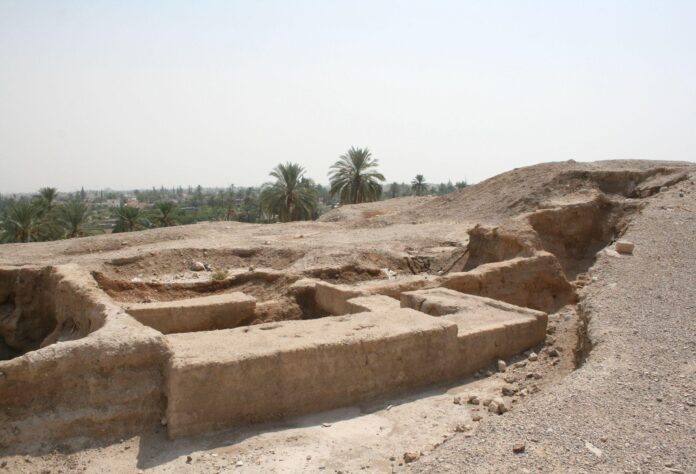The addition of Tell es-Sultan—a prehistoric site in Jericho in the occupied West Bank—to Unesco’s World Heritage site list has inflamed tensions in Israel and Palestine. While Palestinians are pleased to have their heritage recognised, right-wing Israelis have objected to the decision announced Sunday (17 September) at a meeting of the United Nations World Heritage Committee of Unesco in Riyadh, Saudi Arabia.
After the committee declared the oval-shaped mound in the Jordan Valley—which contains prehistorical deposits of human activity and includes the adjacent perennial spring of ‘Ain es-Sultan—“the oldest fortified city in the world”, reactions came swiftly. Right-wing Israeli politicians in the Knesset Land of Israel Caucus held an emergency meeting at a site near Jericho called the Hasmonean Palaces (once home to King Herod), which is not part of the area designated for World Heritage status and is in Area C under Israeli control. They were joined by a settler group called the Guardians of Eternity—an archaeological offshoot of Regavim, an organisation dedicated to safeguarding lands for the Jewish people—who lead a campaign to place heritage sites in the West Bank under Israeli control.
The Israeli minister of heritage, Amichai Eliyahu, expressed his dismay at the Unesco designation. In statements quoted by Yedioth Ahronoth on Sunday, he said “Unesco is acting in opposition to the objective truth when it recognizes the ancient Jericho site as Palestinian and gives legitimacy to the [Palestinian Authority] at a time when the PA is carrying out a methodical denial of heritage and seriously harming historical sites on a daily basis”.
Archaeology has frequently been politicised in Israel/Palestine, as documented by scholars like Barnard College professor Nadia Abu El Haj, who wrote in her 2001 book Facts on the Ground: Archaeological Practice and Territorial Self-Fashioning in Israeli Society that the Israeli state uses archaeology as a tool for the “formation and enactment of its colonial-national historical imagination and… the substantiation of its territorial claims”.
Modern archaeologists in Israel like Israel Finkelstein, whose theory that ancient precursors to modern Israelis and Palestinians were essentially the same people—discounting traditional biblical narratives—have also proved controversial.
But Eliyahu, a member of Otzma Yehudit, the extreme right-wing party led by Itamar Ben-Gvir, contends that “the sites at Jericho have a connection to the Jewish people, as is told in the Torah, the Koran and the New Testament and as is proven from research into the finds at the antiquities sites in Jericho”.
He added, “It is a shame that at Unesco they choose to turn the important issue of preserving history into a political tool and a taunt against the state of Israel. The ministry of heritage will act in tandem with other ministries against this decision and, in order to right the wrong that has been done, will invest in sites in Jericho.”
According to Emek Shaveh, an Israeli non-profit that defends cultural heritage rights and protects ancient sites from “all communities” as public assets, “In recent days, the Israeli government and [Knesset Members] from the extreme-right have been misleading the diplomatic community and international public. The deterioration which they have referred to in the media is not within the boundaries of Tell es-Sultan, the site designated for inscription.”
While the Tell es-Sultan site lies under Palestinian jurisdiction, Israel maintains control over several heritage sites around the city of Jericho.Hisham’s Palace, the 8th century Umayyad ruin that is on Unesco’s tentative world heritage list, is in Area A, under full Palestinian control and is part of a fledgling cultural tourism trail that locals hope will help boost the local economy.
Iyad Hamdan, director general of the ministry of tourism and antiquities in Jericho, told Al Jazeerathat the decision to grant world heritage status to Tell es-Sultan—which also includes fortification walls and trenches, as well as the remains of palaces, staircases and towers from the Neolithic and Bronze ages, “strengthens Palestinian identity and international recognition”.

























